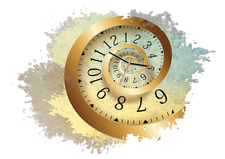Choosing a storage snapshot tool
Clone It

Experts agree that you should keep a copy of your data, but restoring from incremental backups takes time and sometimes doesn't work as expected. Alternatively, you can capture your data in a snapshot. Read on for a review of some leading Linux snapshot tools.
Modern operating systems often include more than 100,000 files. In the event of system crash, bringing a system back online by restoring from incremental backups can be a complex and time consuming task. Data may even get lost along the way, if you forgot to back up certain directories or if you only created incremental backups without performing the occasional full backup.
Snapshots are a fast alternative to incremental backups. A snapshot is a copy of the dataset frozen at a point in time. This article compares several snapshot tools, including Clonezilla [1], CYA [2], Partimage [3], qt-fsarchiver [4], and Snapper [5]. See the "Not Considered" box for a few tools that did not make the list.
Requirements
Snapshot software differs greatly from backup software. A snapshot usually includes a drive partition. Unlike conventional backup sets, this unit cannot be supplemented and accelerated by differential or incremental partial backups.
[...]
Buy this article as PDF
(incl. VAT)
Buy Linux Magazine
Subscribe to our Linux Newsletters
Find Linux and Open Source Jobs
Subscribe to our ADMIN Newsletters
Support Our Work
Linux Magazine content is made possible with support from readers like you. Please consider contributing when you’ve found an article to be beneficial.

News
-
Parrot OS Switches to KDE Plasma Desktop
Yet another distro is making the move to the KDE Plasma desktop.
-
TUXEDO Announces Gemini 17
TUXEDO Computers has released the fourth generation of its Gemini laptop with plenty of updates.
-
Two New Distros Adopt Enlightenment
MX Moksha and AV Linux 25 join ranks with Bodhi Linux and embrace the Enlightenment desktop.
-
Solus Linux 4.8 Removes Python 2
Solus Linux 4.8 has been released with the latest Linux kernel, updated desktops, and a key removal.
-
Zorin OS 18 Hits over a Million Downloads
If you doubt Linux isn't gaining popularity, you only have to look at Zorin OS's download numbers.
-
TUXEDO Computers Scraps Snapdragon X1E-Based Laptop
Due to issues with a Snapdragon CPU, TUXEDO Computers has cancelled its plans to release a laptop based on this elite hardware.
-
Debian Unleashes Debian Libre Live
Debian Libre Live keeps your machine free of proprietary software.
-
Valve Announces Pending Release of Steam Machine
Shout it to the heavens: Steam Machine, powered by Linux, is set to arrive in 2026.
-
Happy Birthday, ADMIN Magazine!
ADMIN is celebrating its 15th anniversary with issue #90.
-
Another Linux Malware Discovered
Russian hackers use Hyper-V to hide malware within Linux virtual machines.

